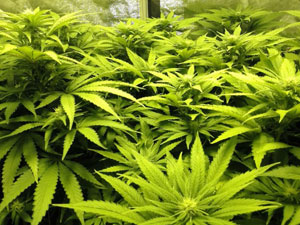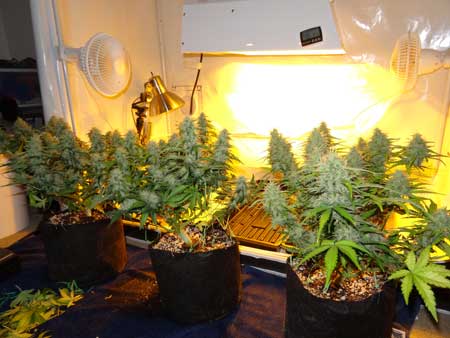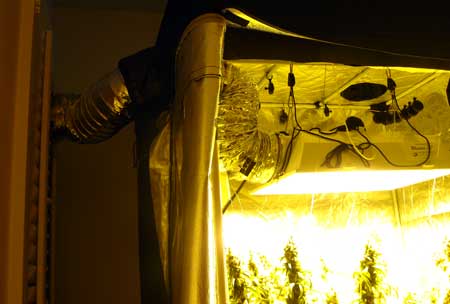by Sirius Fourside

The 315 LEC is similar to an HPS in a lot of ways including its yields, heat output and electricity requirements, but you are able to see plants in full color, which makes it easier to properly care for your plants. LECs are probably too expensive to use on a commercial scale, but they can be the perfect asset for the beginner who just wants their grow to be as easy as possible while still getting the best yields. Just something to keep in mind for beginner growers who can afford to splurge. Learn more about LEC grow lights. ~Nebula (May 12, 2018)
High pressure sodium grow lights – frequently referred to as ‘HPS’ grow lights – were invented around 1970 as an alternative to the then-popular low pressure sodium streetlight.
Not too long after the invention of HPS lights, some crafty individuals realized that these lights work great for growing cannabis. From that point on, HPS lights were unrivaled when it came to lighting for growing cannabis indoors.
Fast-forward to the present day and HPS lights have been in existence for almost 50 years. High pressure sodium lights are still in heavy use in grow rooms and commercial grow operations, but now there are also quite a few alternatives available to grow cannabis besides HPS lights, such as LEDs, LECs, CFLs, T5s, CEDs, plasma, and magnetic induction grow lights to name just a few.
We answer quite a few questions from growers who are looking to replace their HPS with the next big thing… but I say, hold on to your HPS! It’s still amazing at what it does!
Believe it or not, HPS lights still have a lot to offer despite their seemingly old-fashioned technology! In fact, their old-fashioned technology is part of what makes them such great lights! For example, it makes them much more…
Cheap!
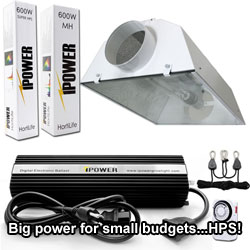
As consumers we’ve all learned that the cheapness of something can sometimes be an indicator of its low quality, but HPS’ are actually cheap for a pretty good reason. HPS lights have been used heavily in the US as streetlights since the 70s, and the technology used in the streetlights is pretty much identical to the technology contained in HPS grow lights.
So as growers living now, we get to benefit from decades of refinement in the technology of the actual lights as well as the processes to make them. In short, people (not just growers) have been refining HPS lights for so long that they’ve become extremely cheap to produce by even small companies. More competition and a lower barrier of entry for production means we see lower cost across the board!
Effective at Fast Growth & Big Yields
One of the most powerful aspects of the HPS light is how great they are at…well…working! HPS grow lights produce fast growth, fat dense buds and consistently big yields. They efficiently turn electricity into light, and they give off a type/color of light that promotes better flowering. Despite all the newer types of lights, HPS lights are still easily the most common type of grow light used today, and the majority of commercial grow operations use HPS grow lights for good reason. In fact, HPS lights have such a solid reputation at producing great yields that I can stop pushing the point right now because…
No One Disputes the Effectiveness of HPS Lights
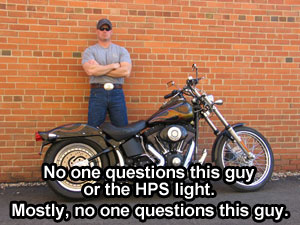
You’ll find growers on both sides of the fence when it comes to the performance of LEDs or magnetic induction grow lights. You’ll find growers who think the CFLs aren’t worth the trouble and that the T5 makes them obsolete…or vice versa. You’ll find growers who think that anything but the sun is a joke.
But what you won’t find is a grower who thinks that HPS lights don’t grow great cannabis. A grower might say that HPS lights run hot, are inefficient or cumbersome, but pretty much everyone agrees that they do a great job and produce great yields.
And consider that this isn’t about some particular company that has mastered the art of making HPS lights. HPS lights have been refined for so long that the technology itself is solid and easy to reproduce no matter who makes the lights.
Scalable
Did you know that you can get a 150W HPS? Despite how many grows you’re likely to see utilizing a 1000W HPS light, 1000W is actually way too much for most people! 1000W HPS lights are used so commonly that many growers will start out with them not realizing how much overkill such a large light can be. In fact, I was considering using 1000W for my first HPS until a helpful person at hydro shop talked me out of it.
Now that I’ve been using 600W HPS light for a number of years, I’ve realized that even this light consistently grows much more bud than Nebula or I can use…all while paying for 60% of the electricity I would have needed for a 1000W light, and producing 60% of the heat.
Think a smaller HPS won’t grow anything? Check out this grow where Nebula harvested 6.7oz under a single 250W HPS light!
Straightforward & Predictable
Straightforward and predictable…kinda sounds the same, doesn’t it? Are there grow lights that are complicated and unpredictable?
Well, yeah! HPS lights are straightforward in that they don’t require extra investigation to find their true wattage; one 600 watt HPS light uses about the same electricity as all other 600 watt HPS lights.
CFLs and LEDs in particular tend to use ‘equivalent wattage’ ratings. Basically, that means that the wattage advertised is usually not the actual wattage used by the light. Rather, they’re saying that the light is strong as (or equivalent to) a light with the advertised wattage…despite not having that wattage.
It doesn’t mean these products don’t work – I’ve used many CFLs and quite a few LEDs – but at the very least it’s suspicion-inducing. On the plus side, there are more and more honest companies who don’t bother with equivalent wattage and only advertise actual wattage.
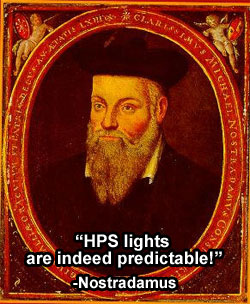
First, they’ve been used for so long that they’re a well documented piece of technology. People have been writing about how to use them for years, and that information hasn’t changed.
Secondly, HPS grow lights make light and heat in a predictable fashion which makes them much more intuitive to use than some other lights.
This means that the experience that growers have with one 400W HPS light will transfer to a different 400W HPS light since they’re essentially the same device. However, a 400W LED from one company can behave very differently from a 400W LED from a different company; a safe distance for one LED panel could toast your leaves with a different panel of equal or even less wattage. There are no standard directions for LEDs. Note: This has a great deal to due with the configuration of the lamp, the size of LED bulbs, as well as the number and type of lenses used in the LED panel, though these customizations to LED panels can actually be some of their biggest strengths when used properly.
But HPS Lights Still Have Weaknesses…
I know I’ve championed HPS grow lights as the best thing since sliced bread, but we really do feel that they do a phenomenal job at growing cannabis easily, and produce great yields and fat buds. But that doesn’t mean they’re without their faults. Here are of the big problems with using HPS lights:
Needs A Tent
Using a tent with your HPS isn’t mandatory, but it will definitely make for a less frustrating job. Even small HPS lights need a tent or specialized grow space, which isn’t a problem for smaller CFLs and LEDs which can fit in more places. If you’re looking for something super stealthy that can be hidden away, HPS lights probably won’t be the answer.
Makes Heat
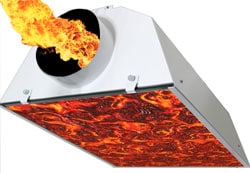
HPS lights aren’t significantly more hot than LEDs or even CFLs by nature; the problem is that most HPS lights use a high amount of wattage. For example, if you set up 400 watts for CFLs in an enclosed space, the temperature will actually end up being higher than if you used a 400 watt HPS, because CFLs are less electrically efficient than HPS grow lights.
HPS lights are mostly sold in 3 sizes: 400w, 600w, and 1000w; there are lights smaller than these, but they can sometimes be tricky to find. This means that even the smaller end HPS (400 watts) is still producing the same or less heat than a grower using 23 small CFLs(26w), or 4-5 UFO type LED panels.
So in short, the amount of heat produced per watt used is about the same, but the lower availability of lower wattage HPS lights means growers end up getting bigger lights and thus, more heat.
Tell-Tale Yellow Light
The color of light from an HPS is perfect for promoting flowering, but the color is also unmistakable, and that might be its greatest weakness.
From the outside, a room flooded in CFL light looks a little odd, but it could just be that the person in the room likes a brightly lit environment.
LED light is a bit more suspicious, but not enough to raise an alarm. From the outside, it looks like a someone is having a little too much fun with a black light.
However, HPS light doesn’t leave room for second guessing. When HPS light bleeds out of someone’s window, from the outside it looks like the person inside is…growing cannabis! If people can see this light coming from a room, you are putting yourself at great risk of becoming a target for nosy neighbors or thieves. So when using HPS grow lights, it’s important to make a stealthy exhaust so no one outside your home is the wiser.
All that said, each type of light has its pros and cons, and it’s hard to say that any one type of grow light is definitively better except in the eyes of the person using them. Of course, these are our opinions but we don’t have any objections to be convinced otherwise. Let us know what you think!
Jump to…
Comparison of Different Cannabis Grow Lights
How Much Light Should I Give My Plants Each Day?

